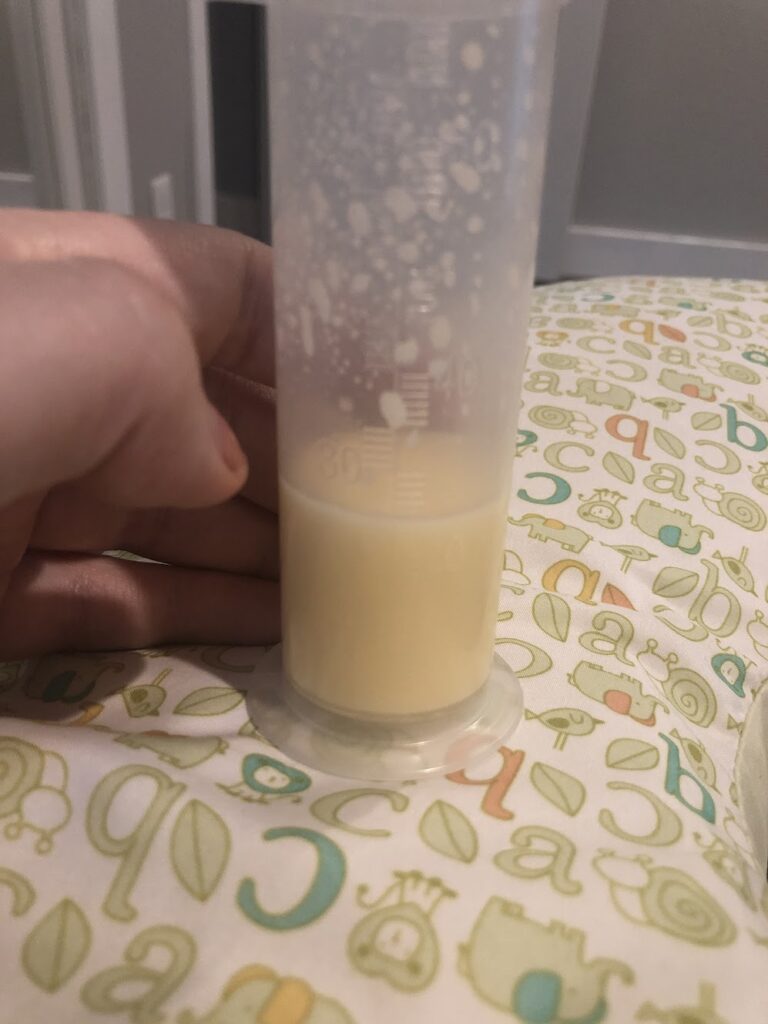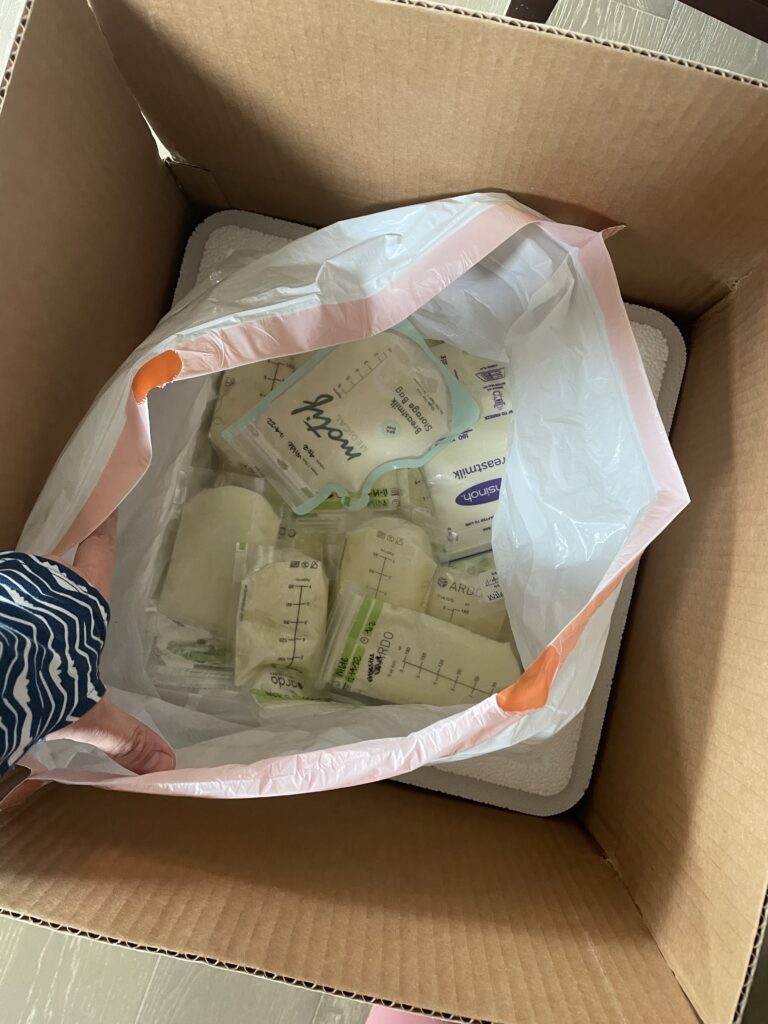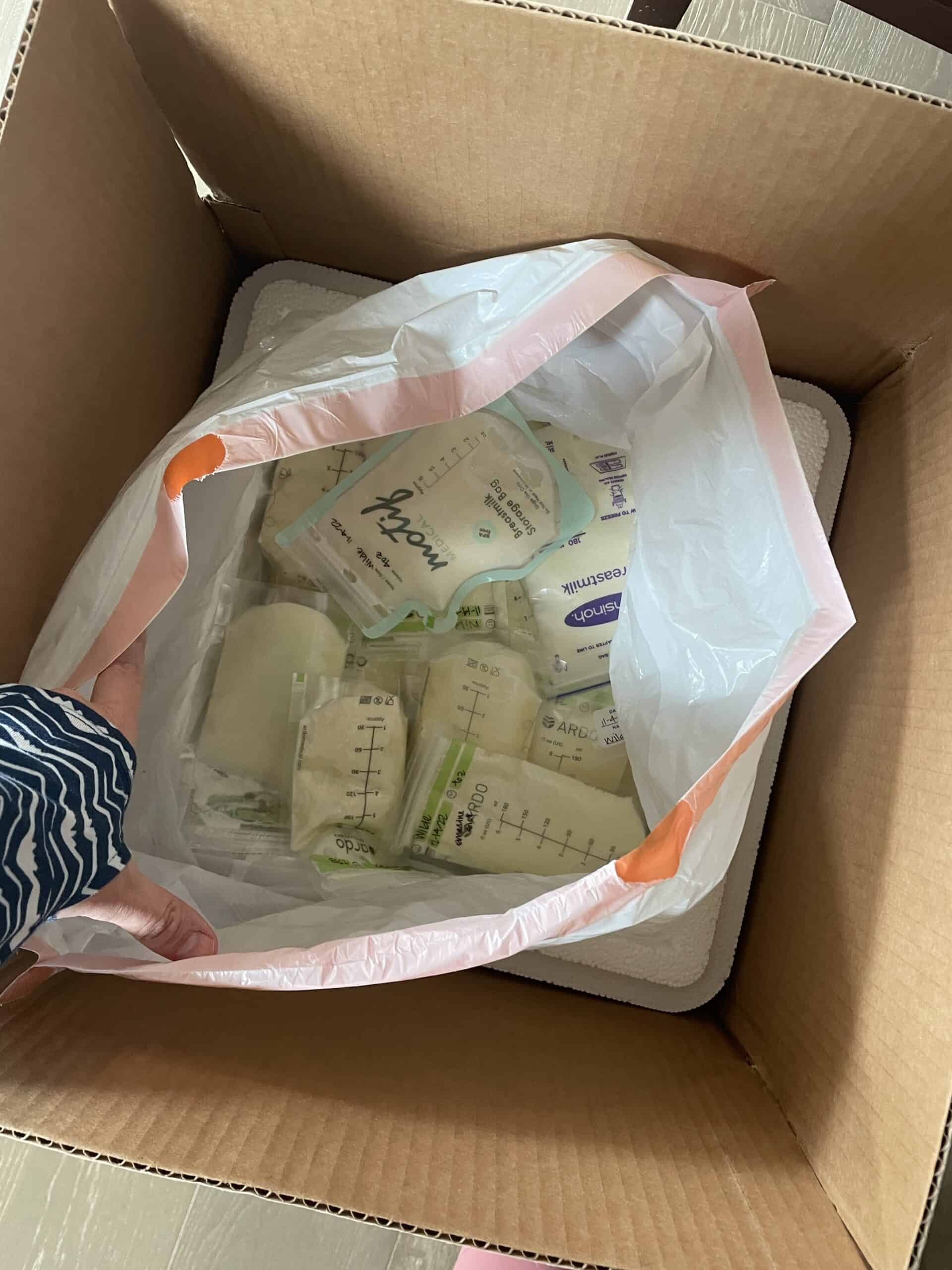
My nursing journey was a complicated one – a story for another day. Going into breastfeeding, my anxiety about producing enough milk got the better of me. As far as I knew, nobody in my family successfully breastfed. As a first time mom, I desperately wanted to be able to give my January baby the immunity benefits of breastmilk. The thought of flu season made me anxious on top of normal first time mom anxieties. That anxiety then shifted to pandemic anxiety a few months later. All of this anxiety, plus some confusing guidance at the hospital (another story for another day) lead me to develop an oversupply.
As I started to fill up my freezer, the pandemic dragged on. It became abundantly clear I wouldn’t need the milk I had stored. In fact, I might not even be away from my baby enough to need any of the bottles I registered for. I knew I needed to find the right home for my extra milk.
My first donation process felt seamless. That first experience turned into a second donation experience with my sweet little bottle refusing second child. This post covers what I’ve learned as a two time breastmilk donor and what to know if you’re considering donating. If you’re wanting to know more about my favorite pumping/nursing products, you can find more info here.
Why I decided to Donate Breastmilk

As I mentioned earlier, my freezer filled up with breastmilk while my opportunities away from the house dwindled in 2020. On top of everything else, I found out that my milk had high lipase. High lipase is an enzyme that makes your milk taste like it’s gone bad. The milk isn’t actually bad, it just tastes that way and makes some babies reject your milk. My baby did not like the taste of my milk after 12 hours. All of that freezer milk wasn’t going to be used by son!
Previously, I’d heard about people “selling” breastmilk but research lead my quickly to identifying creepy adults that are common breastmilk buyers. Besides, the process of selling did not seem easy at all. Most of all, I wanted my milk to provide benefits to babies that needed them. My sister-in-law mentioned being a milk donor after her first baby and than actually accepting donor milk with her second. If a baby needed my breastmilk, I wanted to be to help them through an approved, safe process just like my niece was helped! Through Google searches, I discovered Mother’s Milk Bank of North Texas. I called, asked a series of questions, and the ball quickly got rolling.
Qualifications for Becoming a Milk Donor
When I called, I wasn’t exactly sure if I would be approved. I take allergy medicine every day and I obviously took pain medication during my c section recovery. I imagined a very intimidating process for applications and approval. While there were A LOT of medical/lifestyle questions to answer, the process was fairly easy. The milk bank informed me that milk can be accepted even if you don’t meet all the criteria. You CAN donate milk for research purposes (which also helps babies!). While the qualifications might vary based on the milk bank, the biggest qualifications I remember were:
- Donors must commit to donating a minimum of 100oz (this helps offset cost with the approval process)
- No lactation herbs (some of these can be hard on babies’ stomachs – especially preemies).
- No drugs
- Wait a minimum of 24hrs after drinking alcohol before storing donation milk
- If you happen to need medications such as antibiotics, you should document the dates and notify the milk bank of any donor milk during this time period. That milk will be used for research rather than on babies
Thankfully, there were no issues with my allergy medication, I was ready to move forward.
Donor Application/Approval Process
As an applicant for the milk bank, I answered a looooong questionnaire online, completed a phone interview where I answered a lot of health questions, and coordinated approval from OB and my son’s pediatrician. One this process was complete, I scheduled a blood draw. The milk bank gave me the option of visiting a testing lab OR having someone come to my house to do the blood draw. I quickly realized the milk bank worked hard to make the process as convenient for donors as possible. Someone could come to my house in the middle of the day and quickly doing the blood draw. This took less time than putting my baby down for a nap.
After the blood draw, I waited about two weeks before I received my approval via email! The process was a lot easier than I imagined. I received a donor number and the milk bank reached out to me about every two months to follow up on any updates to my health/donor status.
Process: Donating Breastmilk

Every couple of months when my freezer filled up, I would donate my milk. My milk bank gave me three different options for donating my milk: in person drop off, home pickup, or shipping. In person drop off and home pick up are understandably limited to being within a certain mileage range of the milk bank. To my surprise, I was able to continue donating to my same milk bank from Colorado! Through my two donation journeys, I’ve been able to test out all three options available.
In Person Drop Off
My milk bank had a specific list of hospitals I could directly drop off my donor milk. While I struggled navigating elevators and finding the nicu freezer location when I did this, I was thankful to immediately clear my freezer. Because I struggled a bit packing/parking/etc, this was my least favorite donation option.
Milk Pickup Courier
My favorite milk donation option by far was scheduling a milk courier. A week in advance, I could send my milk bank an email indicating a couple of days I’d be available for someone to stop by and help me clear my freezer. This was my favorite option not only because I didn’t have to leave the house, but because I’d have help packing up the milk! The couriers were always so nice and they usually asked me if I needed extra milk storage bags while they were there!
Milk Shipping
Now that I live in Colorado, milk shipping is my only option for donating milk to my original approved milk bank. I love this option as well! My milk bank sends me a shipping cooler, ice packs, a shipping box, and detailed instructions for shipping my milk. I can schedule fedex to come to my house, but I usually just drop by a fedex as soon as I pack it up! The process has been easy and cost free!
Final Breastmilk Donation Thoughts
Genuinely, we see so many freezers full of milk on social media these days. A freezer full of milk is absolutely not necessary. I loved donating milk. The milk bank management understands the struggles of new moms and works to ease the donation process on all moms. If you or any mom you know has a freezer full of milk, I’d recommend applying to become a donor today. I helped babies, cleared my freezer, and didn’t overextend myself. Getting accepted and donating could not have been easier. Thinking about donating breastmilk? Any other questions? Let me know in the comments section!
